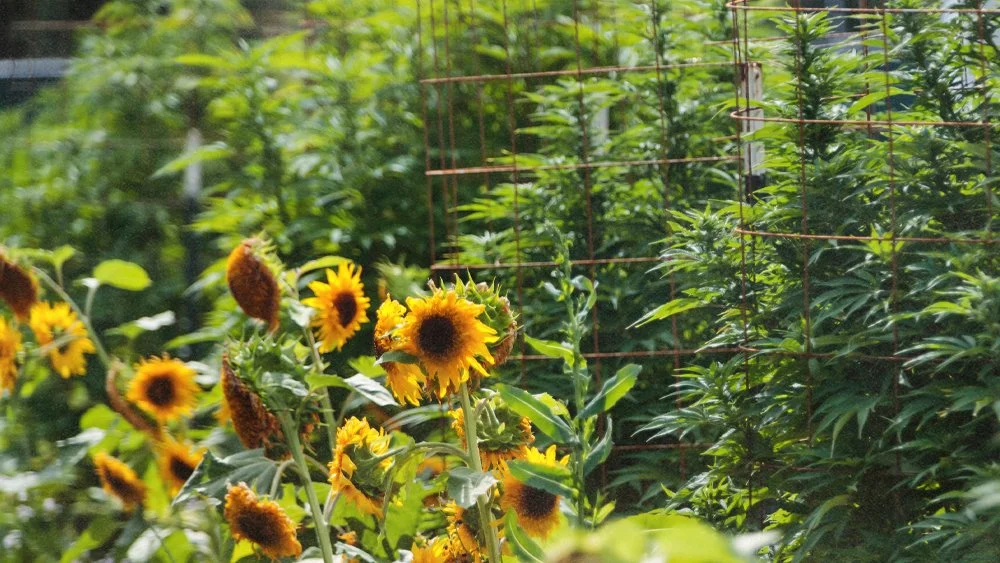The debate between sungrown and indoor cannabis can sometimes be as polarizing as politics in our country 😊 Some consumers and growers swear by sungrown cannabis because like any plant, it’s meant to be grown outdoors, and they believe that the full expression of this plant we all love, can’t come to fruition under artificial lights and in a controlled environment. On the other hand, there’s others that prefer the look and smell (bag appeal) that comes from indoor grown and often find more consistency out of the product they purchase that are grown this way.
It might be hard to break down which one is better since it’s obviously a very subjective question, but we’ll lay out the pros of both (as well as some cons mixed in) and next time you stop by the shop try out the latest indoor or sungrown flower to decide for yourself!
Photo Credit: Eagle Trees Farm
Sungrown Pros:
How Cannabis Naturally Grows: Since the dawn of time, plants that undergo photosynthesis have evolved and flourished under the rays of the sun and are meant to be grown with the different cycles of the seasons. Natural sun-light is much more complex and powerful than what even the best grow lights can mimic, especially how the sun moves in the day. Unlike indoor plants, outdoor cannabis is exposed to a full spectrum of light from the sun, moon, and stars. Outdoor cultivation also provides changes in air flow from wind, brief periods of clouds, rain, and all the other environmental “stressors” that have been shown to contribute to higher terpenes and cannabinoid production
Low Environmental Impact (if done right) and low cost: Sungrown cannabis is a lot more cost effective and requires far less equipment and resources than indoor cultivation. Since growth is powered by the sun and depending on the climate by natural rainfall, outdoor operations save a considerable amount of money on energy to power lights, humidifiers, dehumidifiers, heaters, cooling, water, fertilizers and more! Growing in greenhouses may be a slight exception but the costs are still a lot lower and for farms that practice a no-till style of farming, the impact on the environment is very minimal
Unique and Powerful Terpene and Cannabinoids: Although outdoor cannabis typically doesn’t have that sparkling frosty look that most consumers have come to expect, sometimes as the old saying goes, “You can’t judge a book by its cover”. Outdoor grown cannabis typically looks different because of those environmental stressors but that only helps with building out a unique flavor profile or terroir. Terroir is a French term used to describe the different environmental factors that affect how a plant tastes, namely wine, including the climate, soil, topography of the region. This term has started to bleed over to the cannabis industry to help explain how two identical strains can be grown in different regions and have a completely different terpenes profile or maybe even different medicinal effects.
Raven Grass
Indoor Pros:
Environmental Control: Indoor cannabis plants are more sensitive than outdoor plants so because of that, a cultivator must carefully monitor and adjust various factors within a closed, interior grow-room. Growers can control all aspects of light, air flow, soil, and nutrients that affect the plants. If done right, this creates an ideal situation for breeding purposes, research and development, and the preservation of unique genetics. For example, if a cannabis breeder has an attractive purple color that appeals to consumers, indoor production can focus on that characteristic and target it in upcoming generations of the plant’s life cycle.
Standardization and “Bag Appeal”: As the industry continues to grow, standardization of products will be extremely important, especially in the medical space so patients know they are getting the same product every time. With the controlled environment listed above, growers can produce a product with a consistent look and smell or bag appeal. Since there aren’t any environmental factors, this means that there can be larger trichome production which is often something that draws in most consumers upon first look and smell.
Year-Round Cultivation: Without cannabis dependent on the seasons, if set up correctly, it can be cultivated wherever and whenever. Indoor growers can produce cannabis in places that typically aren’t hospitable to any plants because of extreme weather or temperatures, take somewhere like Nevada for example which has seen a boom with legalization of cannabis. The yields may not be as large as outdoor cultivation but that is typically offset if not surpassed due to the frequency of indoor harvest a grower can do throughout a year.



